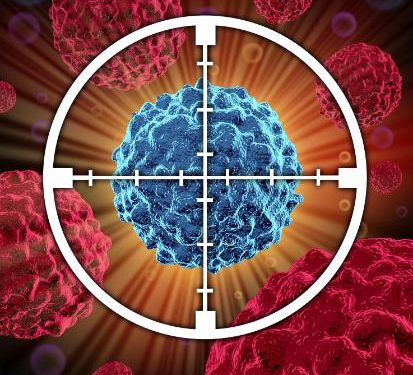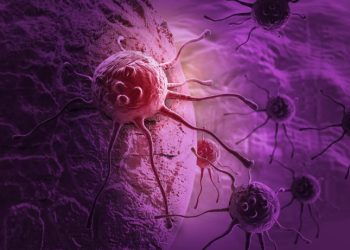Cancers start when a cell’s DNA changes. DNA gives the cells instructions to grow and multiply at a certain rate, and to die at a certain time.
If you notice any new symptoms that don’t get better, talk to your doctor or nurse immediately. They will check whether they could be a sign of head and neck cancer.
What are the symptoms?
If you have a lump or sore that doesn’t go away, a pain or other change in your head or neck, check with your doctor. These symptoms could be signs of a serious health problem. But they may also be caused by something less serious, like a viral infection or an injury. The most common head and neck cancers are squamous cell carcinomas, which develop in the cells that line moist tissue (mucosa) of the mouth, throat, larynx, nose or sinuses. These cancers can grow quickly and spread to other parts of the body, but they usually cause localized symptoms.
The type of symptoms you have depends on where the cancer is in your head and neck and how far it has spread. The first step in diagnosing head and neck cancer is determining its stage. The stage of a tumor describes how far the cancer has grown and whether it has reached nearby lymph nodes.
A doctor can identify the stages of a head and neck cancer by examining your face, ears, mouth, throat, larynx or sinuses. He or she will feel for any spots or lumps and ask questions about your history. You may be asked to swallow or yawn to assess how your throat feels. The doctor may also test your eardrum or the way you suck and chew to see how well your throat is working.
Most people who get head and neck cancer are men or people assigned male at birth (AMAB). Cancers most often affect those over age 50. Risk factors vary by cancer type, but include using tobacco and drinking too much alcohol, and having certain infections, such as human papillomavirus (HPV) and Epstein-Barr virus (EBV). The HPV vaccine (Gardasil 9) can help prevent the types of cancer that most often occur in the head and neck. People who have had a previous head or neck cancer are at higher risk for future cancers. These people should talk to their healthcare provider about getting the vaccine.
What causes head and neck cancers?
Cancer is a disease that starts when cells in the body start to grow out of control and form a mass, or tumor. The tumor can then start to spread and invade nearby tissues. Eventually, cancer can even break away from the head or neck and travel to other parts of the body. This is called metastatic cancer.
Most head and neck cancers start in the tissue that lines the inside of the nose, mouth or throat. These cells are called squamous cells. About 90% of head and neck cancers begin in squamous cells. Cancers that start in other kinds of cells are less common.
Some head and neck cancers may not have any symptoms at all. Others have symptoms like a lump in the neck, difficulty swallowing or a sore that doesn’t heal. If you have these or other signs of head and neck cancer, it’s important to see your doctor right away. Early detection is the best way to treat head and neck cancers effectively.
UPMC Hillman Cancer Center specialists can diagnose head and neck cancers using tests such as physical exams, imaging tests, blood work and a biopsy. We also offer a number of cutting-edge therapies for head and neck cancers, including radiation therapy, chemotherapy and immunotherapy.
Our goal is to keep the cancer under control while preserving your function and ability to speak, eat and breathe. We also focus on helping you return to your normal life activities as quickly as possible after treatment.
We can help you make healthy lifestyle choices that can reduce your risk of developing head and neck cancers. You can get help to quit smoking and cut down on alcohol use. We can also connect you with support groups and other resources to help you stick with these changes. You should have a general health exam and dental exam each year to screen for head, neck and oral cancers.
Some of the most effective treatments for head and neck cancers are surgery, radiation therapy and chemotherapy. We specialize in advanced techniques, such as intensity-modulated radiation therapy (IMRT), which uses computer-controlled x-ray accelerators to deliver high-precision radiation to the tumor site, while sparing nearby tissue.
How are they diagnosed?
Cancers in the head and neck can be hard to diagnose because the symptoms are similar to many common illnesses. But UPMC Hillman Cancer Center experts use state-of-the-art technology to identify these diseases early and start treatment right away.
The first sign of a head or neck cancer is often bleeding in the mouth or nose, but it may also include a sore throat that won’t heal, difficulty swallowing, or a lump in the neck that doesn’t go away. Symptoms also depend on where the tumor starts, with most head and neck cancers starting in the mouth, throat, sinuses, or salivary glands.
Your doctor will examine you and ask questions about your past health to check for signs of head or neck cancer. You might have X-rays, cell scrapings, or a biopsy to find out if you have head or neck cancer. A biopsy involves removing a small sample of tissue that your provider then checks under a microscope to look for cancer cells. Your healthcare team might also use blood tests or other lab tests to help make a diagnosis. These can check for viruses like HPV, which is a risk factor for some types of head and neck cancers.
If your provider thinks you have a head or neck cancer, they’ll refer you to a specialist surgeon, usually an oral and maxillofacial surgeon or an ear, nose and throat (ENT) surgeon. They’ll do more tests to find out what type of head or neck cancer you have and how far it has grown.
Surgery is the main treatment for head and neck cancers, but sometimes radiation or chemotherapy are also used. They can kill cancer cells or slow their growth, and they’re usually given in a hospital or clinic. The treatment you receive depends on the location and type of head or neck cancer and other factors such as your age and overall health.
After you finish treatment, your healthcare team will give you regular follow-up appointments for several years. These include exams of your mouth, nose, throat, and neck to make sure the head or neck cancer hasn’t returned or spread.
What are the treatments for head and neck cancers?
The treatment plan for your head or neck cancer will depend on where the tumor is located and whether it has spread. If the cancer hasn’t spread, it may be treated with surgery and radiation. If the cancer has spread, it is treated with chemotherapy and radiation and possibly other treatments. Your doctor will discuss the options with you and explain how the types of treatment affect your quality of life.
Most head and neck cancers start in cells that line the surfaces inside the throat, mouth and nose. These cells are called squamous cells. About 9 out of 10 head and neck cancers are squamous cell carcinomas. Some of these cancers spread to lymph nodes in the neck. This may cause swollen lymph nodes in the neck (neck distention). The cancer can also spread to other parts of the body, including the lungs. This is called metastatic squamous cell carcinoma of the head and neck. (PDQ)
Cancer that starts in other areas of the head and neck, such as thyroid, oesophagus or windpipe (trachea), is not considered part of head and neck cancer. These cancers need different treatments and are not covered in this information.
Treatment for head and neck cancer usually includes surgery, radiation therapy and sometimes chemotherapy. The goal is to remove the cancer and a small amount of healthy tissue around it. Then, doctors use radiation or other therapies to destroy any remaining cancer cells. Surgery, radiation and chemotherapy are called the standard of care. They are often given together and are used for the majority of head and neck cancers.
If you’re diagnosed with head and neck cancer, your doctor will consider many factors when planning your treatment. These include your age, where the cancer is located and how it might affect other body functions, such as your ability to eat, talk and breathe. Your doctor may refer you to a specialist in head and neck cancer.
People who have had head or neck cancer have a higher chance of getting another primary cancer in the head or neck, esophagus or lung (called a second primary cancer). You can help reduce your risk of this by not smoking and using alcohol. Other ways to lower your risk of getting a second cancer are to get regular health screening tests, such as a physical exam and x-rays, and to keep an eye out for changes in the skin or in how you eat or speak.









